18 Top Digital Asset Management (DAM) Tools
With the ever-growing need for visual content, DAM tools have become an essential part of modern businesses, especially those in the creative industry. Below are some of the popular DAM tools available in the market.
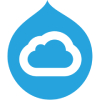
The Widen Collective® is now Acquia DAM. A tool to help marketing, sales, and e-commerce teams find what they need, coordinate workflows, and publish up-to-date assets.
Visit website➔
Adobe Experience Manager connects digital asset management, a powerful content management system, and digital enrollment to help your brand flouris
Visit website➔
Amplifi.io is a cloud-based digital asset management (DAM) platform that helps businesses centralize and manage their digital content across multiple channels and platforms.
Visit website➔
BrandFolder is a cloud-based digital asset management platform that helps businesses organize and share their brand assets such as logos, images, videos, and documents in a centralized location. It provides a range of features to help businesses streamline their workflows, improve brand consistency, and collaborate effectively with team members and external stakeholders.
Visit website➔
Bynder DAM is a cloud-based digital asset management platform that enables businesses to efficiently store, organize, manage, and share their digital assets such as images, videos, documents, and creative files in a secure and centralized location.
Visit website➔
With 30 years of experience and 2500 satisfied customers, Canto is a top-tier digital asset management solution that has revolutionized the way businesses operate. Discover how Canto has transformed the workplace.
Visit website➔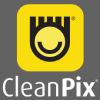
CleanPix is a cloud-based digital asset management (DAM) platform that allows businesses and organizations to securely store, organize, and distribute their digital media assets such as images, videos, and documents.
Visit website➔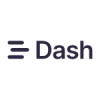
Dash is a productivity-focused digital workspace that enables businesses to streamline their workflows, automate tasks, and collaborate effectively with team members. It provides a range of features such as project management, communication tools, and integrations with other apps to help businesses work more efficiently.
Visit website➔
Simplify brand management with a platform that connects everything (and everyone) important to the growth of your brand.
Visit website➔
Image Relay is a cloud-based digital asset management platform that helps businesses store, organize, and share their visual assets such as images and videos in a centralized location. It provides a range of features to streamline workflows, improve collaboration, and maintain brand consistency.
Visit website➔
Konainer is a cloud-based container management platform that allows developers to easily deploy, manage, and scale their containerized applications across multiple environments.
Visit website➔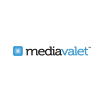
With MediaValet’s cloud-based digital asset management platform, your content library is instantly accessible and impactful. With our AI-powered system, you can focus on maximizing ROI and stop wasting time and money recreating lost assets.
Visit website➔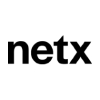
NetX is known in the DAM industry for having an incredibly helpful and friendly sales, support, and onboarding team. We love what we do, and we continue to strive to make NetX the tool you love to use above all else.
Visit website➔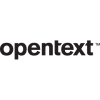
OpenText™ Media Management is a powerful, innovative, and highly scalable digital asset management (DAM) solution that manages media assets through creation, distribution and retirement.
Visit website➔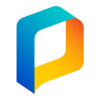
Effortlessly manage, collaborate, and share your visual media with the world using PhotoShelter, the premier Digital Asset Management platform.
Visit website➔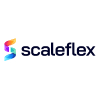
Upload, organize, process, and deliver optimized brand assets including images, videos and graphics anywhere on any device rocket fast. Made for Developers, loved by Marketers.
Visit website➔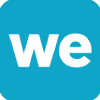
Wedia's DAM is like a superhero lair for global companies with fancy brands, BUs, and departments! It's a central hub where you can securely store, organize, and repurpose all your digital assets and media files, including photos, videos, 3D, and 360° content.
Visit website➔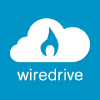
Wiredrive is a cloud-based media sharing and collaboration platform designed for creative professionals in the advertising, media, and entertainment industries.
Visit website➔Good to know...
Why should my company invest in a digital asset management (DAM) tool?
Companies should invest in a digital asset management (DAM) tool for several reasons:
- Efficiency: A DAM tool helps companies manage their digital assets more efficiently by providing a centralized location to store, organize, and retrieve their digital assets. This saves time and effort compared to searching through multiple folders, hard drives, or cloud services to find the right files.
- Consistency: A DAM tool ensures that all employees have access to the same up-to-date version of digital assets, which helps to maintain consistency in branding, messaging, and quality.
- Collaboration: DAM tools enable collaboration between teams and departments by allowing users to share, comment, and collaborate on digital assets. This promotes cross-functional teamwork and improves communication.
- Security: DAM tools provide enhanced security for digital assets by controlling access, usage, and distribution. This ensures that only authorized users have access to confidential or sensitive data.
- Cost savings: Investing in a DAM tool can save money by reducing duplication of effort, minimizing the risk of losing digital assets, and improving the efficiency of marketing and content creation processes.
- Scalability: DAM tools can scale with the growth of the company, providing an efficient and reliable solution for managing digital assets as the company expands.
Overall, a DAM tool can help companies improve their workflow, collaboration, and security while reducing costs and improving efficiency. This makes it a valuable investment for any company that relies on digital assets for their marketing, branding, and communication efforts.
What are the top features in a DAM tool?
The top features in a digital asset management (DAM) tool can vary depending on the needs of the organization, but some of the most essential features include:
- Centralized asset storage: A DAM tool should provide a centralized location to store and organize all digital assets, making it easy to find and access them quickly.
- Metadata management: Metadata is information about the asset, such as title, description, keywords, and tags, which makes it easier to find, organize, and use digital assets. A DAM tool should enable users to easily add and manage metadata for each asset.
- Search functionality: A powerful search feature is essential for quickly finding the right asset in a large library of digital assets. The search function should be able to search by keywords, metadata, file type, and other criteria.
- User and access management: A DAM tool should provide control over who can access and modify digital assets, enabling administrators to assign different levels of permissions to different users or groups.
- Workflow and collaboration tools: DAM tools should provide tools for collaboration between team members and stakeholders, such as commenting, approval workflows, and task assignments.
- Integration with other tools: The ability to integrate with other tools, such as content management systems, project management software, and creative tools, can enhance the efficiency of workflows and increase productivity.
- Analytics and reporting: DAM tools should provide analytics and reporting capabilities to help users understand how digital assets are being used, how they are performing, and how they can be improved.
- Brand management: A DAM tool can also include features for brand management, such as customizable brand guidelines, brand asset libraries, and templates for branded materials.
Overall, a DAM tool should provide a user-friendly interface, be scalable and customizable, and offer robust functionality for managing digital assets, enabling organizations to optimize their content and creative workflows, increase efficiency, and ensure consistency and brand compliance.